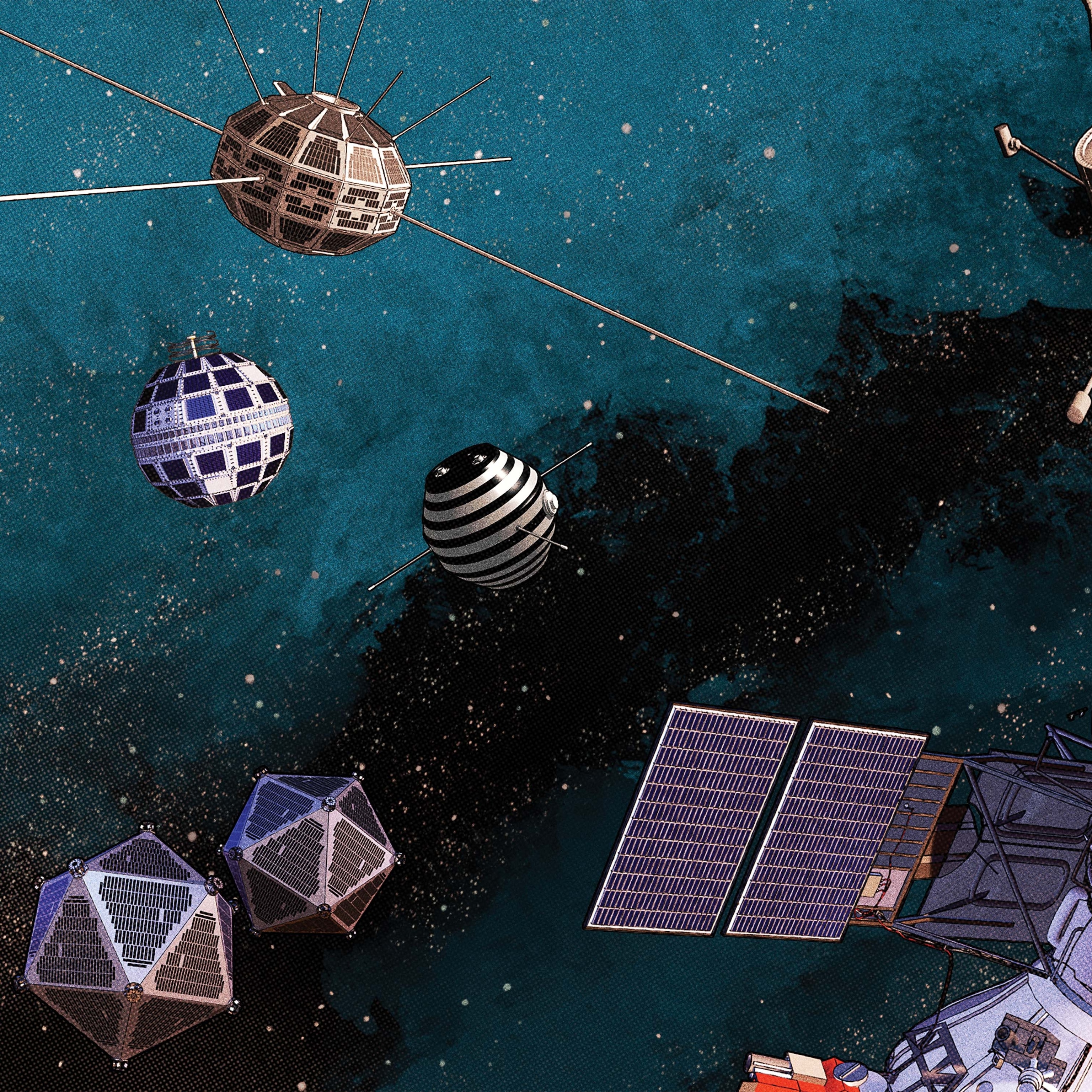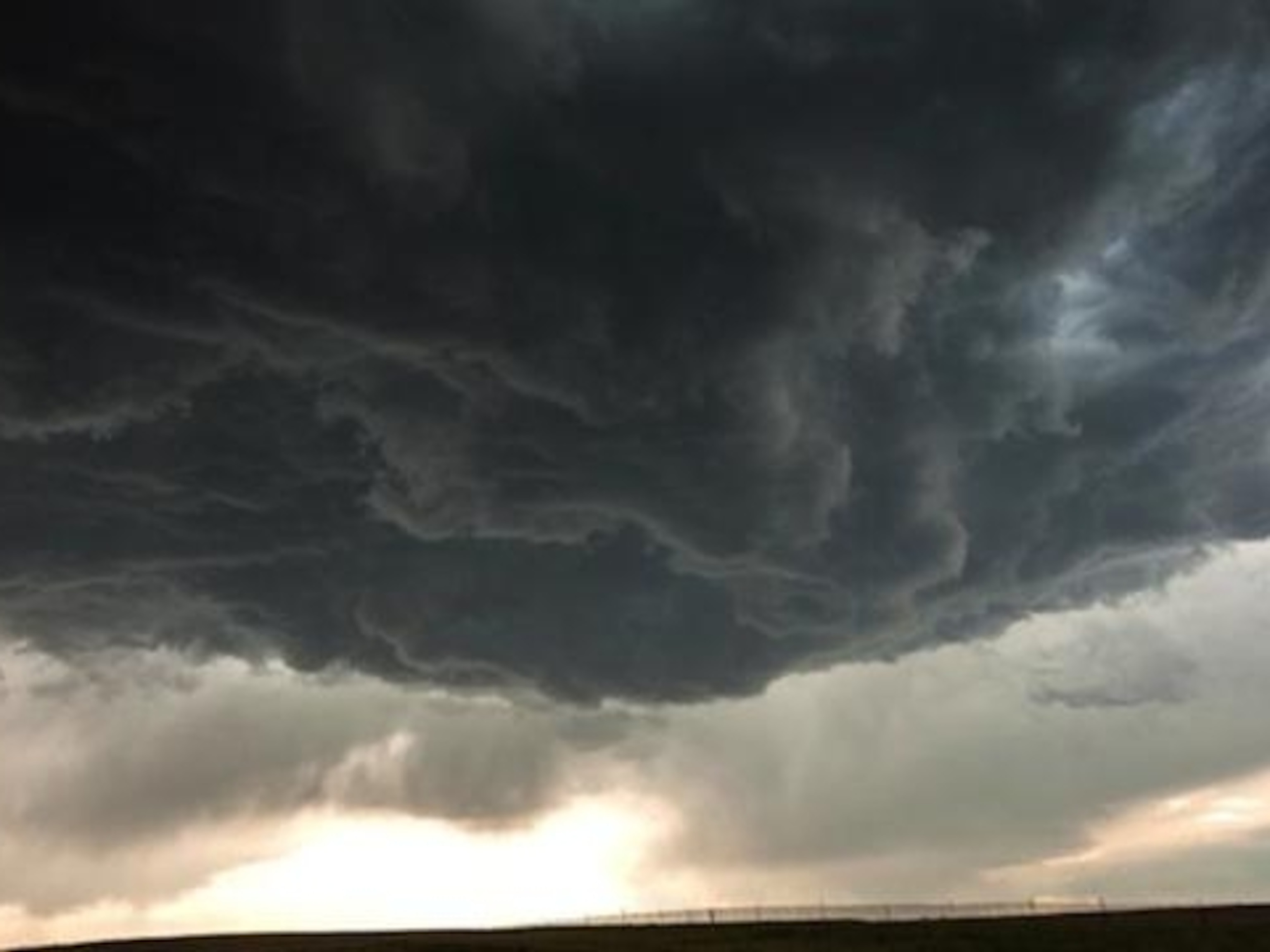Time-Lapse Video Spotlights Hawaiian Air Force Base That Tracks Satellites
Sky-watchers make sure satellites don't collide in space.
On a dormant volcano in Hawaii's scenic Maui sits an Air Force base charged with watching the celestial unknown for satellites.
Here, atop Mount Haleakala, is the Maui Space Surveillance Complex, one of three locations of the Ground-based Electro-Optical Deep-Space Surveillance Network, or GEODSS, operated by the United States Air Force.
Their job? Make sure satellites don't collide.
Air-Traffic Controllers of the Night Sky
Seem a bit Gravity-esque to you? It's not too far from the truth, says Capt. Shahn Rashid, a commander at the base.
Rashid credits three high-tech telescopes, each with lenses that are three feet (one meter) in diameter, with the job.
"We look at objects in space and satellites and all kinds of space junk that could harm other satellites," he said. "We do that on a nightly basis with all kinds of satellites, like for cable companies, cell phones, things like that."
All satellites are monitored for as long as the base can track it. International satellites are also tracked to be sure they don't collide with each other. Today, objects in space are often easily trackable, but in the 1960s and 1970s they were difficult to follow.
"There are thousands of man-made objects including spent rocket bodies and bits of space debris that have been orbiting the Earth for years," Rashid said. "Back in the '60s and '70s, they didn't have equipment to track older satellites when they ‘died.’ Now we do, and we track them."
While the movie Gravity may have some inaccuracies, it correctly portrays what orbital debris can do to delicate satellites, spacecraft, and even the International Space Station.
"[A situation like the one in Gravity] could happen, but it would be something really, really bad. That's why we do our job," he said.
Time-Lapse Video
Normally a quiet operation at Mount Haleakala, the Maui Space Surveillance Complex is getting a shot of celebrity with the time-lapse video and story that was produced by Andrew Breese and photographed by Bennie Davis for Airman, the official magazine of the U.S. Air Force.
The time-lapse video is garnering rave reviews for its stunning photography of the Hawaiian skyscape. The video offers a fascinating glimpse into not only the man-made "stars" orbiting our planet but also Mount Haleakala's landscape, a stark contrast to the tropical beauty usually associated with Hawaii.
The video was inspired by a conversation on a plane.
"A couple years ago, I sat on a plane next to a former commander, and we got in a discussion about who had the better job," Davis said.
The commander in question was responsible for this GEODSS site and was able to win the debate when he stated that he worked in Maui and "got to see the Milky Way," according to Davis.
"It kind of stemmed from there," said Davis.
Not a Vacation
While photographing the night sky in Hawaii may seem like a dream come true for many photographers, it was anything but for the team.
"When you talk to your bosses and say you want to go to Maui for a week," laughs Davis, "they think you're going to get mai tais and visit tiki huts for the week.
"We spent 16-hour days on top of the volcano. It's a two-and-a-half-hour drive [up the volcano to the base], with hairpin turns. It's rainy and cold, 43 degrees [Fahrenheit] in October."
Another problem was being so high up—being 10,000 feet (3,000 meters) above sea level affected everything from the group's breathing to their laptops, whose screens expanded from the lower pressure.
"We had all this camera gear, and basically taking more than five steps was hard," said Davis. "There were oxygen machines all around."
Rashid said the altitude and relative isolation are exactly what makes Mount Haleakala ideal for sky-watching.
"The best [location] is actually the Big Island in Hawaii," he said. "They're a little higher than us, 13,000 feet [4,000 meters] and change. But it becomes difficult to man a site at that altitude. To commute to that altitude is hard, and the pressure is pretty low."
The photo team worked overnight shifts to capture the time-lapse videos.
"We would leave around 2 [p.m.] and get to the facility around 5," Breese said. "We left at sunrise each day. You're doing that for 16 hours on very little sleep, then going right back to it again."
"One shot takes roughly four hours to get a decent clip to edit from," added Davis. "Every shot you see from the time-lapse is four hours."
Mysteries?
The duo found a mysterious pink light but never received confirmation of exactly what it was.
"If you look at the shot of the facility at night [in the time-lapse video], you see a pink orb fly in and out," said Breese. "You can't figure it out. No one can. It's not an aurora borealis."
For his part, Rashid said, "I have never seen anything not explainable by science."
Whatever the case, the time-lapse video showcases the immense beauty of the pristine Hawaiian night sky.
"It was one of the roughest trips," Davis said. "But we're not going to complain about it, as beautiful as it was."
Follow Tanya Basu on Twitter.






